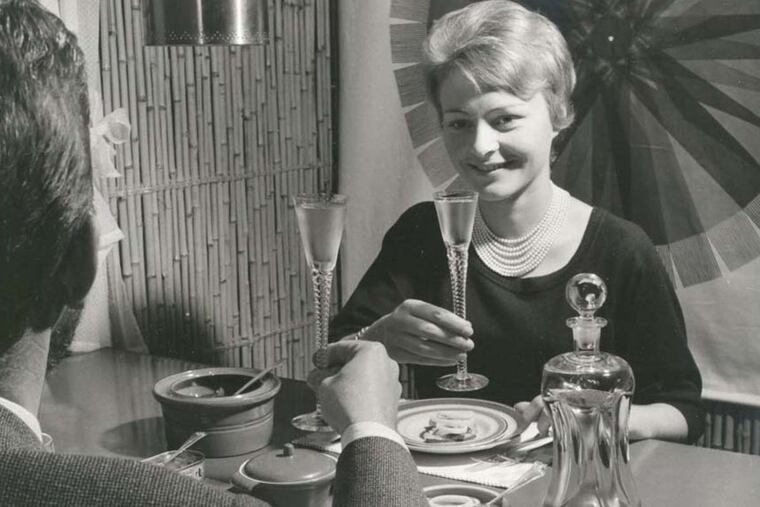Aquavit gets a star turn at the Swedish American Historical Museum in Philly

While the New Nordic cuisine has been the darling of the food world in recent years, much less attention has been paid to old-fashioned Scandinavian fare and its traditional boozy companion, aquavit. With a pronounced caraway flavor, this potent "water of life" spirit can smell and taste like rye bread in a bottle.
Aquavit, along with Scandinavian beer and ale traditions, gets its due at the Swedish American Historical Museum in a new exhibit that recently opened and runs through September. The show, "Skål," is named for the traditional Nordic toast (pronounced skoal). Skål translates as "bowl," and the exhibit features many examples of these communal drinking vessels.
Yet the exhibit goes beyond the history of libations in Denmark, Norway, and Sweden. It examines their role in immigrant life, from the joys of Chicago's Swedish taverns to the scourge of alcoholism, said Tracey Beck, the museum's executive director. The local museum is one of six institutions contributing artifacts to the traveling exhibition, coordinated by the Museum of Danish America in Elk Horn, Iowa.
"Skål is one of the few words from Danish, Norwegian, or Swedish that's survived through many generations since immigration, and most of these words have to do with hospitality," said Tova Brandt, the curator of the Iowa museum. Brandt will speak Saturday, Feb. 25 at the Philadelphia museum in a program that includes tastings curated by Arcus, a Norwegian distiller. Arcus markets 75 different aquavits, only two of which reach our shores: Norway's Linie and Denmark's Aalborg. But new boutique distilleries in the Midwest and Pacific Northwest have filled the gap in those regions' liquor stores. In Pennsylvania, a handful of State Stores carry Minnesota's Vikre Ovrevann, with a few others available through special order and online. In New Jersey, larger stores carry Linie.
Among the local artisan distillers, only Dean Browne's Rowhouse Spirits produces aquavit. With his Nordic Akvavit, he follows the Danish tradition in both production and spelling (the Swedes spell it identically, but in Norway it's Akevitt). The unaged spirit, with subtle caraway, dill, and fennel flavors, can be purchased at the Kensington distillery, housed in a former service station at 2440 Frankford Ave.
Despite the growth of domestic product, the most widely available nationally remains Linie. Its history begins in 1805, when a trading firm shipped aquavit in old sherry casks to the East Indies, but with no buyers, the spirits returned to Norway. Turns out, rolling seas and varying temperatures during the two trips over the equator ("the line") altered the product, rounding and deepening the flavor. Nowadays, it is shipped via Australia, and every bottle bears the name of the vessel that carries it to Australia and back, to acheive the same result.
Norway's barrel-matured aquavits are best sipped neat at room temperature like fine whiskey. Danish and Swedish aquavits are usually unaged and served icy cold from the freezer when consumed straight. They make ideal mixers and can easily replace gin or vodka in many cocktails, as can domestic aquavits, which tend to have stronger flavors. Those with dill and coriander accents make superb Bloody Marys.
Scandinavians pair different aquavits with different foods, from one meant to accompany rakfisk, an odious fermented trout, to Christmas bottlings designed for seasonal fare like pinnekjott (dried mutton leg). Clear taffel (banquet) aquavits with strong caraway flavor like Aalborg match well with herring and other cured fish. Others are distilled with shellfish in mind.
"Skål" runs through Sept. 17. Guided tours of the exhibit, with aquavit tastings, will be held monthly.
Swedish American Historical Museum, 1900 Pattison Ave., Philadelphia. 215-389-1776, www.americanswedish.org.